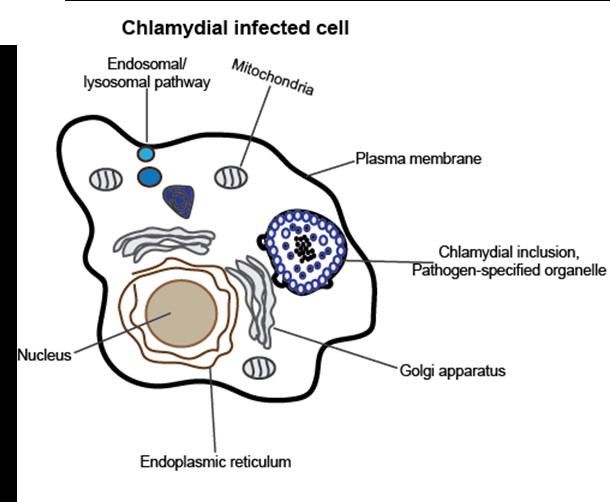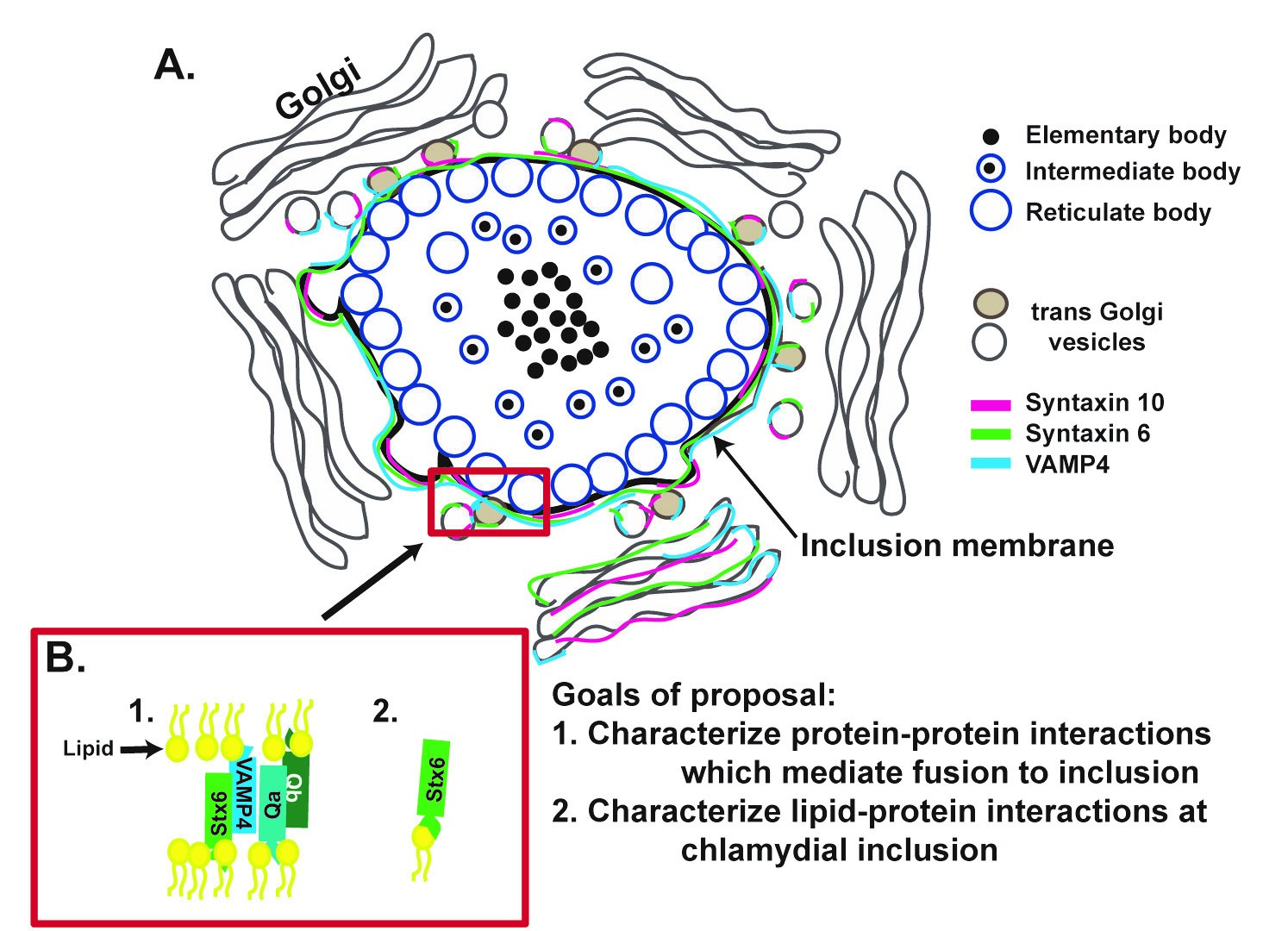The Rucks Lab where you can study why Chlamydia love lipids!
|
In our lab, we study the fascinating and highly successful obligate intracellular pathogen, Chlamydia trachomatis. Yes, that Chlamydia trachomatis: the organism which causes the most common bacterial sexually transmitted infection and is also the leading cause of preventable blindness in developing countries. Despite having a genome 1/4 of the size of a pathogenic E. coli, Chlamydia adeptly infect the host while limiting the host response to infection. Most chlamydial infections are initially asymptomatic, but untreated infections can lead to infertility and pelvic inflammatory disorder. |
|
Chlamydia are also unique in that they have a biphasic developmental cycle. They infect cells only while in their elementary body (EB) form. From the time that the organisms enter host cells until the time that they exit, they grow and develop within a membrane bound vacuole termed the inclusion. Within the first hour of infection, the EB differentiates into the reticulate body (RB). The RB is not infectious, but is metabolically active and divides by a newly described polarized budding method. To maintain its autonomy, the chlamydial inclusion interacts with very specific host cell pathways, which ultimately influences the lipid and protein content of the inclusion. Paramount to chlamydial survival within the host is the organism’s ability to obtain and utilize host cell-derived lipids. These lipids contribute to the membrane of the chlamydial inclusion, as well as, the chlamydial cell membranes. It is well established that Chlamydia will mimic the lipid composition of their host cells, but the organisms will not incorporate all available host-derived lipids into their cell membranes. We are interested in understanding how and why this phenomenon happens and, ultimately, understand how these activities contribute to their success as pathogens. Specifically, we study cellular machinery that modulates fusion of vesicles with membranes. We are interested in protein-protein and protein-lipid interactions which occur at the chlamydial inclusion.
|
Dr. Rucks's faculty bio page.



